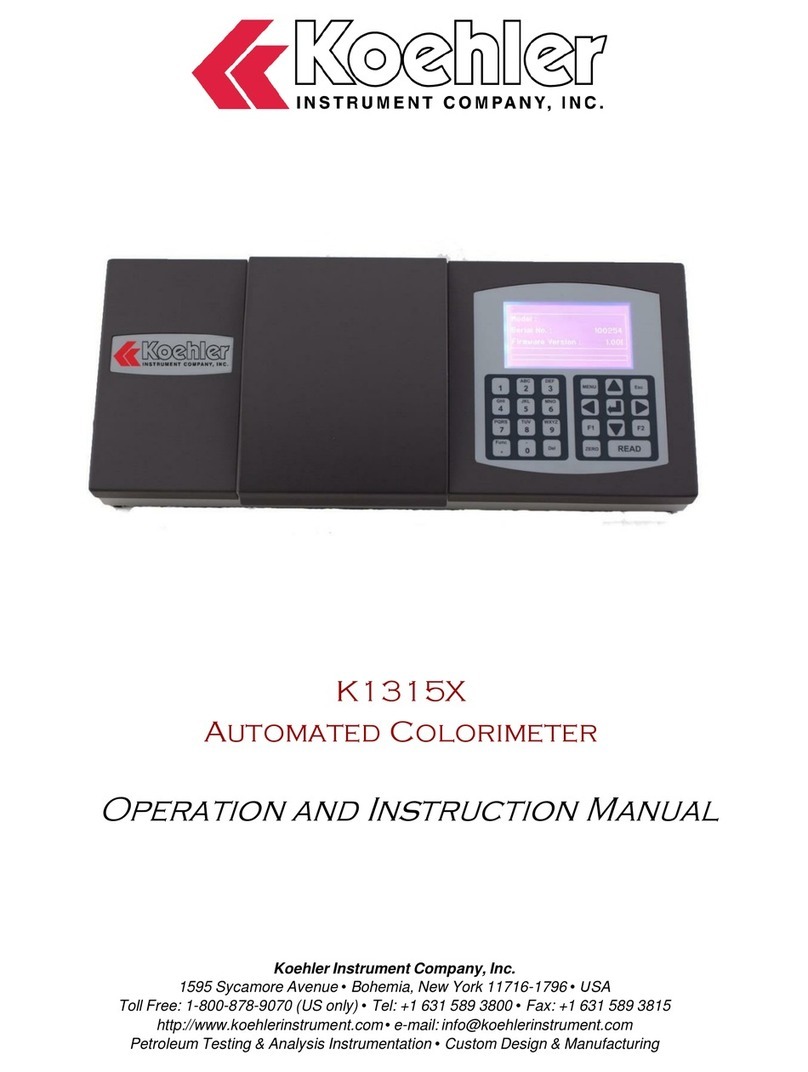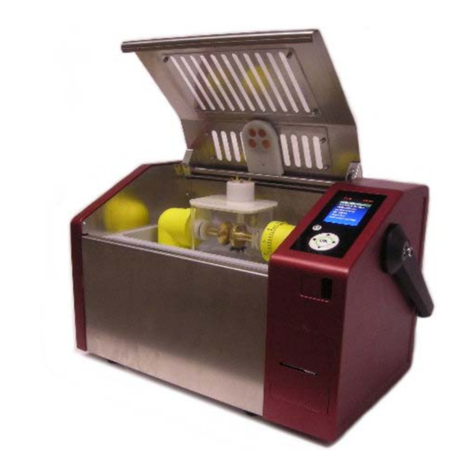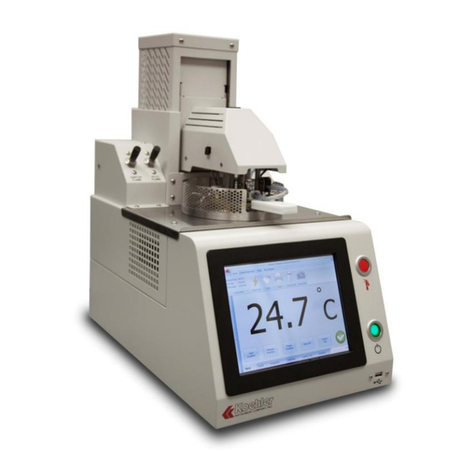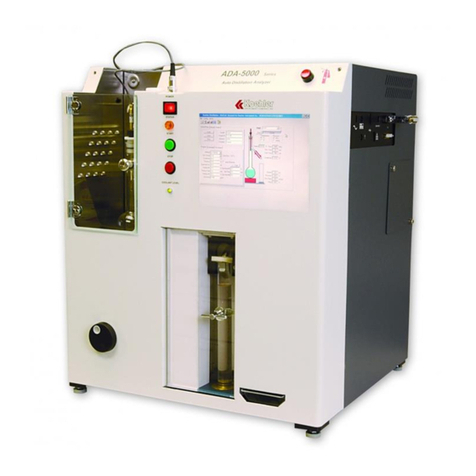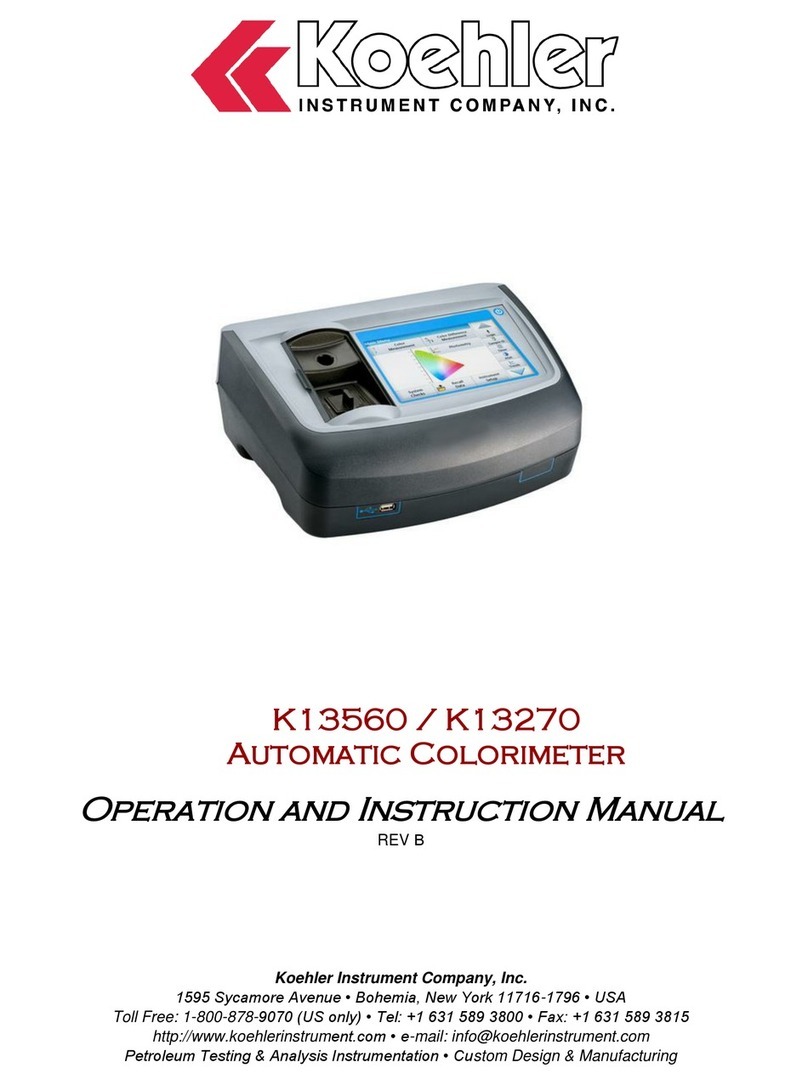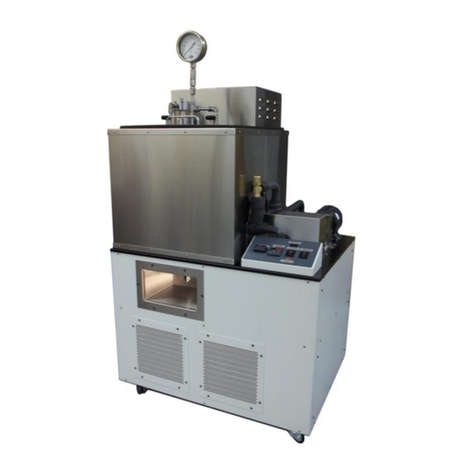
K955XX Digital Penetrometer & Software
Operation and Instruction Manual
K955XX-Manual
-4-
defined as a "new WEEE producer". As such we must provide information on refurbishment, treatment,
and re-use.
Our instrument manual will include this compliance statement and indicate that any collection of materials
will be handled by their authorized distributor. In the event that the distributor is unreachable or is no
longer a distributor for Koehler Instrument, Co., other arrangements may be made including accepting the
materials directly.
Recycling is free of charge. Shipping is the responsibility of the end users. Whether shipping to a
distributor or to Koehler directly, safe, properly declared, and labeled packaging and shipping expenses
are the sole responsibility of the end user.
WEEE Marking
Since Koehler products are subject to the WEEE Directive we must display the WEEE symbol shown
above in accordance with European Standard EN 50419 on the equipment. It must be indelible, at least
5mm in height, and clearly legible. If the equipment is too small the mark must be in the product literature,
guarantee certificate, or on the packaging. Rules on marking are established in section 49 of the WEEE
Order.
Koehler Instrument Company, Inc.
c/o RECYCLING
1595 Sycamore, Ave.
Bohemia, NY 11716
As a minimum the following substances, preparations and components have to be removed from any
separately collected WEEE:
- Mercury containing components, such as switches or backlighting lamps (compact fluorescent lamps,
CFL),
- Batteries
- Printed circuit boards if the surface of the printed circuit board is greater than 10 square centimeters
(about 4 sq in.),
- Toner cartridges, liquid and pasty, as well as color toner,
- Chlorofluorocarbons (CFC), hydrochlorofluorocarbons (HCFC) or hydrofluorocarbons (HFC),
hydrocarbons (HC)
- Liquid crystal displays (together with their casing where appropriate) of a surface greater than 100
square centimeters and all those back-lighted with gas discharge lamps,
- External electric cables
- Components containing refractory ceramic fibers as described in Commission Directive 97/69/EC of 5
December 1997 adapting to technical progress Council Directive 67/548/EEC relating to the classification,
packaging and labeling of dangerous substances (2),
- Electrolyte capacitors containing substances of concern (height > 25 mm, diameter > 25 mm or
proportionately similar volume)
2. The following components of WEEE that is separately collected have to be treated as indicated:
- Equipment containing gases that are ozone depleting or have a global warming potential (GWP) above
15, such as those contained in foams and refrigeration circuits: the gases must be properly extracted and
properly treated. Ozone-depleting gases must be treated in accordance with Regulation (EC) No
2037/2000 of the European Parliament and of the Council of 29 June 2000 on substances that deplete
the ozone layer (4).













